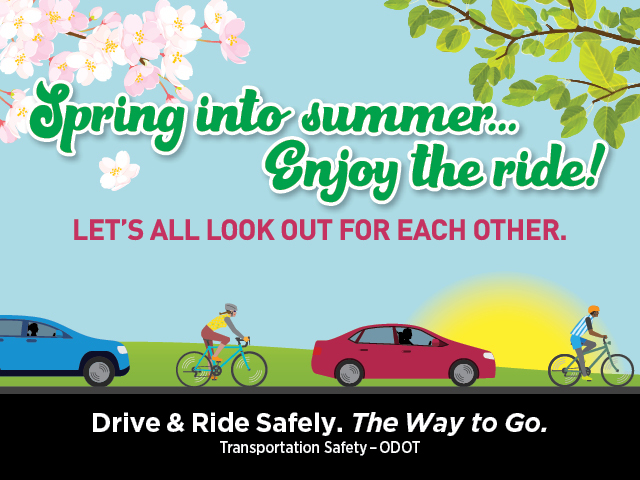EDITOR’S NOTE: The traffic has already increased here in Tillamook County – allow extra time to get from place to place – pack your patience, and be extra aware of bicyclists, pedestrians and visitors unfamiliar with our roads. Slow down, enjoy the view and don’t be in a hurry! There’s no need to unsafe passing – you’ll get to your destination, and everyone will arrive alive.
SALEM — As traffic volumes increase and summer travelers start heading out, it’s time to pay extra attention to basic rules of the road – all aimed at getting us where we’re going safely.
Traffic volumes across the state are approaching 2019 levels after falling sharply in the beginning months of the pandemic. And summer is traditionally a busy travel season.
It’s important we all focus on safety no matter how we’re getting around.
“We can take simple steps to make sure we’re safe and those around us are too,” said Traci Pearl, ODOT’s Highway Safety Section manager. “Wear your seat belt. Look out for others. Stay alert, and always drive, bike or walk sober. These actions can save lives.”
Everyone should:
- Plan ahead to avoid the frustration of unplanned delays and construction projects.
- Know and follow traffic laws.
- Be aware of surroundings.
- Pay attention to weather and road conditions and drive accordingly.
- Put cell phones on do not disturb (i.e., don’t use it while driving).
- Focus on the important task at hand: walking, rolling, biking or driving.
Oregon is experiencing an increase in traffic fatalities compared to the same time last year, with a 32% increase, according to preliminary data. As of June 14, 229 traffic deaths were reported statewide compared with 173 over the same period in 2020.
The data isn’t final. But historically in Oregon, the leading cause of fatalities and serious injuries in traffic crashes is speeding, followed by alcohol or drug use, unrestrained occupants, and distracted driving. Often they involve more than one of these factors.
How can we all make roads safer?
Look out for each other: Especially when approaching crosswalks or intersections, entering and exiting parking lots, and at stop signs.
When driving, yield to people riding bikes as you would to people driving or riding motorcycles. Remember they may be moving faster than you think.
When walking, bicycling or rolling try to be more visible by wearing bright or reflective clothing. Also, walk facing oncoming traffic as far to the right side of the road as safely possible for visibility; and walk on sidewalks whenever they are available.
Always assume the other person doesn’t see you. Stay predictable, travel defensively and be sure to make eye contact with people driving before crossing traffic. Look ahead for hazards or situations to avoid that may cause you to fall, like potholes, grates or train tracks.
Give extra room: When driving, remember people who bicycle need at least a three-foot buffer in order to pass them safely (it’s the law). If you cannot pass safely, you may need to slow down and wait until it is safe to do so.
Plan ahead: Map your route to give yourself extra time. Check TripCheck.com to be aware of any closures and traffic conditions and consider alternate routes that may have less traffic or may be easier to navigate.
Remember, we all want to get where we are going safely. However you use the road, Pearl said, remember to be considerate of others on the roadway, because sometimes following the law is not enough.


